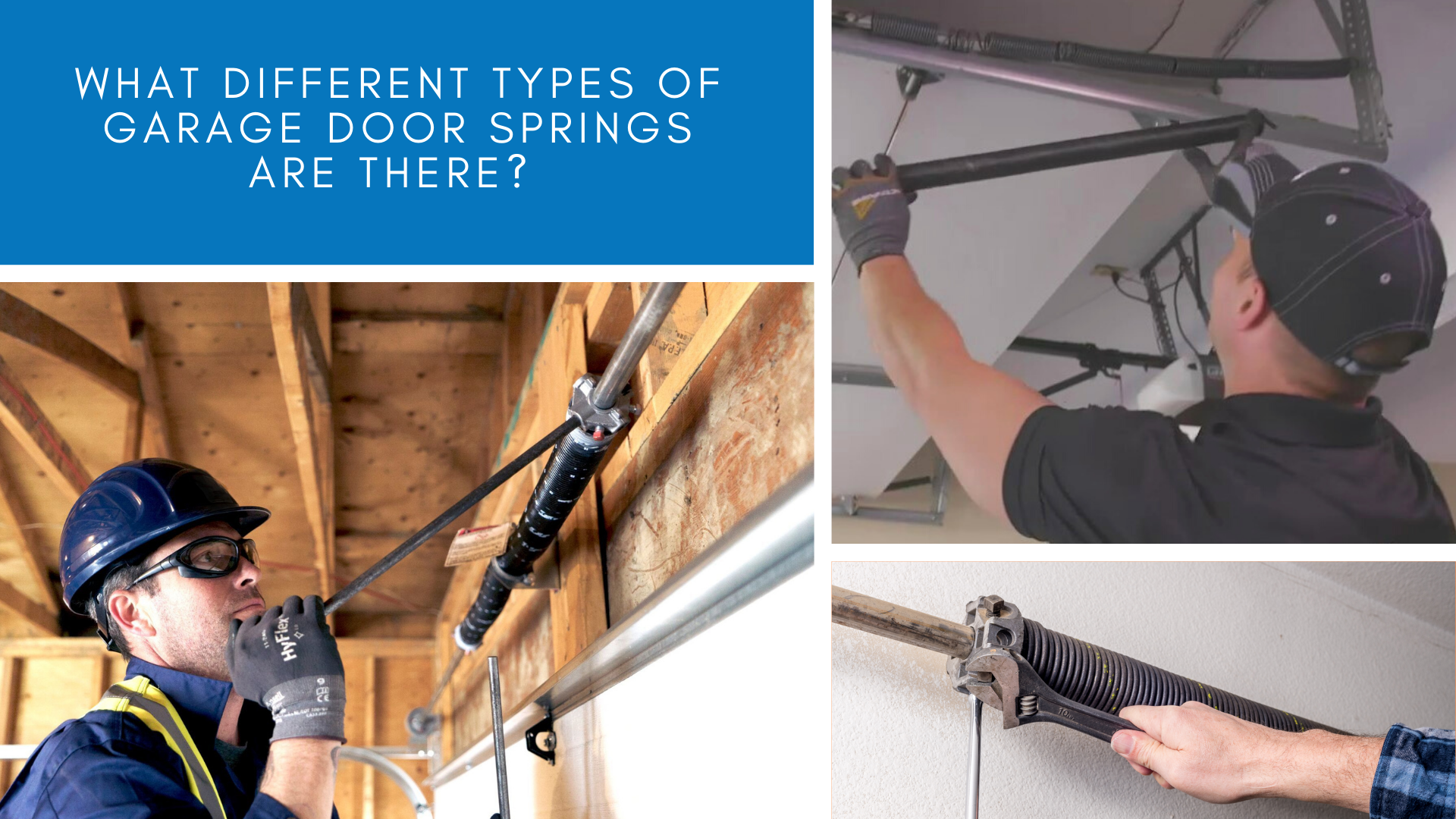
If your garage door needs a broken spring replacement, you may be frustrated by the fact that there are dozens of different options and brands available. In essence, all garage door springs work to the same principle; to provide the force that lifts the garage door. Here is a quick breakdown of the different types of garage door springs you can encounter.
Types of garage door springs
Garage door springs are divided into two categories: extension springs and torsion springs. Each one works in a unique way. It is essential to know how they work so you can properly assess whether a garage door spring replacement is needed, as well as how to identify the particular spring you need to have replaced.
Extension springs
Many older residential garage doors have two extension springs. These springs stretch perpendicular to the garage door, along the horizontal tracks on both sides.
How does extension spring work?
When the garage door is closed, the weight of the door stretches the extension spring. As it stretches, the spring stores the force as energy. When you open the door, the spring releases the mechanical energy to help lift the door. Without the springs, it would be impossible for the opener alone to raise the heavy weight of a garage door.
Types of extension springs
-
Open looped spring—This type has an open wire at the end to secure the spring to the spring anchor. If this open wire breaks, the entire extension spring must be replaced. An open looped spring does not require disassembly during replacement.
-
Double looped spring—This type has two coils on both ends that connect to the pulley and eye bolt. They are stronger than open loops, albeit more difficult to replace.
-
Clipped ends—Among all types of extension springs for garage doors, this is the most durable. The clips minimize the strain on the springs, so they have a longer lifespan. Clipped ends are ideal for garage doors weighing 200 pounds or more. They are, unfortunately, the hardest to replace.
Torsion springs
These are tightly wound springs that are typically attached to a metal rod that runs parallel to the garage door's opening, right above it.
How does torsion spring work?
Torsion springs are wound and turned across the metal shaft. This wound position produces a twisting force (known as torque), which the spring transmits through a shaft to the cable drums on both sides of the door. The torque is converted from a rotational to a linear force, creating tension on the cables and making it possible to lift a door weighing more than a hundred pounds with minimal effort.
Types of extension springs
-
Standard torsion spring—These springs are frequently used on sectional residential garage doors. The springs are supported by the metal shaft that goes through the middle. Lighter garage doors typically utilize one torsion spring, whereas heavier garage doors require two.
-
Early set torsion spring—This type is almost the same as standard springs; the only difference is they are installed in the middle of the torsion shaft. They also require different hardware, which is positioned next to the cable drums on each end of the torsion shaft.
-
Steel rolling door torsion spring—Often utilized in commercial applications, these springs work just like other torsion springs but do not balance the door well in the middle when in operation.
In need of a garage door repair? J&M Garage Doors is a leading garage door spring installation and garage door spring repair services for residential, commercial, and industrial doors. You can rely on our team of experienced technicians for 24/7 emergency garage door repair. Call us today and take advantage of our Free Estimates.
garage door spring replacement
